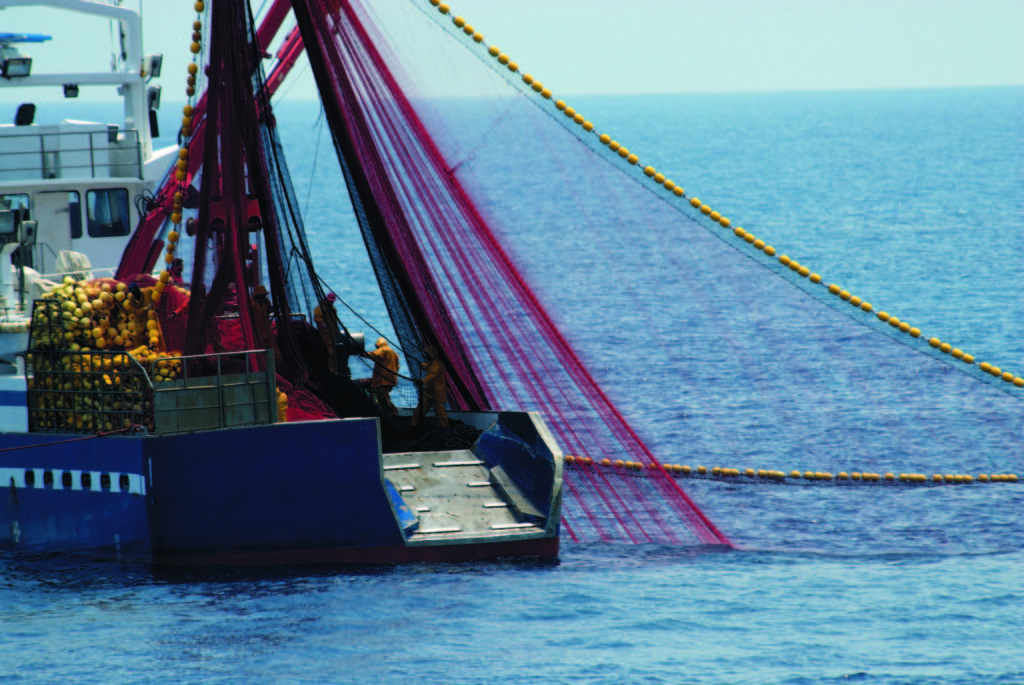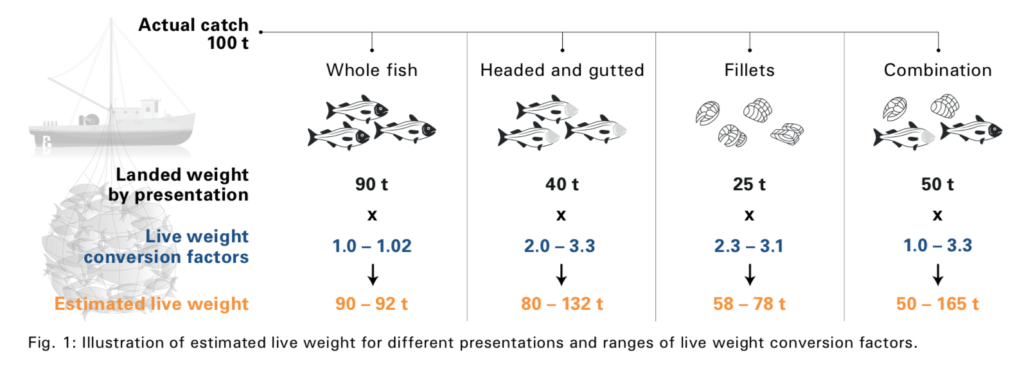The practice of Illegal, Unreported and Unregulated (IUU) fishing exacerbates overfishing through distorting our understanding of what has been caught. It also threatens marine ecosystems and the livelihood of coastal communities worldwide. IUU fishing remains a rampant phenomenon, enabled in part by poor traceability and a lack of transparency in seafood supply chains. One way to prevent it is to have an accurate and consistent system in place that allows regulators to rigorously estimate the exact amount of live seafood that was fished, landed, and/or imported.

The total consumption of seafood in the European Union (EU) is one of the world’s highest. The EU is also the world’s top importer and the second largest trader of seafood. It therefore has a responsibility to support improved traceability and transparency for EU-caught and imported products as a means to fight and prevent IUU fishing locally and internationally and to accomplish its zero tolerance approach as detailed in the EU Green Deal. By the time commercial fish products are landed, they have often been processed in one way or another. Some fish products are gutted and headed on board, others are filleted or frozen. By removing a substantial amount of the fish during the onboard processing, the weight of the fish is significantly reduced. When a big catch is landed, if all or most fish have been processed, it will unsurprisingly weigh a lot less than it would originally have if the fish were whole. This can create difficulties when trying to evaluate how much fish was actually taken out of the water. And it is here that conversion factors come in.
Conversion factors are a set of predefined values, generated by fisheries specialists, which are used to evaluate the original live weight of the catch. The landed weight, that is the weight after processing, is therefore multiplied by a conversion factor which is specific to the type of processing, and results in a reconstruction of the original ‘live’ weight of the fish. This estimated live weight, as it helps assess how much fish was actually taken out of the sea, can then be used to better inform sustainable fisheries management.

Conversion factors are therefore a useful and necessary tool in fisheries management, but the way they are currently determined, managed, and used has several shortfalls. In the EU, out of the top 1,600 domestically landed species, only 629 have EU conversion factors, and these will themselves differ from Member State to Member State, even for the same types of processing. This substantial variability in conversion factors at EU and Member State level can result in considerable differences in the way live weight is reported and fisheries catch evaluated. Furthermore, conversion factors also significantly differ between the individual types of processing and do not need to be reported in fishing logbooks. This means that there can be considerable variations in the estimated live weight of the same type of seafood caught, depending on where it was taken and by whom.
Similarly, substantial variability in conversion factors exists between the EU and importing third (non-EU) countries, and they do not need to be reported on catch certificates when seafood products are imported into the EU. Given how much conversion factors can vary from country to country, it is exceedingly difficult to accurately estimate how much fish is imported in terms of live weight.
The EU IUU Coalition’s recommendations
Administrative documents for fish landed in the EU, such as logbooks and landing declarations, and for seafood trade imports, such as catch certificates, represent an important step for tracking catch volumes. Considering the importance of reliable catch data for fisheries management, these are the key recommendations for improved transparency of conversion factors:
1. For EU domestic products, conversion factors should be reported in fishing logbooks and landing declarations alongside estimated live weight for each species.
2. For traded products, and should live weight continue to be reported, conversion factors should be entered on catch certificates.
3. Conversion factors used for domestic products should be defined by the EU for all landed species and all processing methods, to ensure comparability and standardisation.
4. The source of the conversion factors should be provided in fishing logbooks, landing declarations, and catch certificates to allow for better identification of discrepancies between Member States, EU, and/or third country values.
Please consult our fact sheet on conversion factors here.
The Environmental Justice Foundation, Oceana, The Nature Conservancy, The Pew Charitable Trusts and WWF are working together to promote, align and strengthen traceability systems in key seafood markets in order to end illegal, unreported and unregulated (IUU) fishing.
